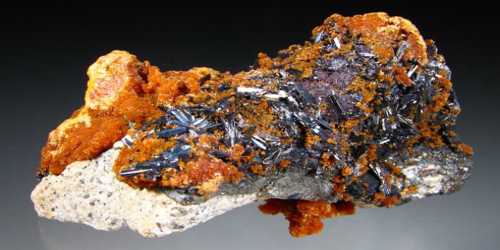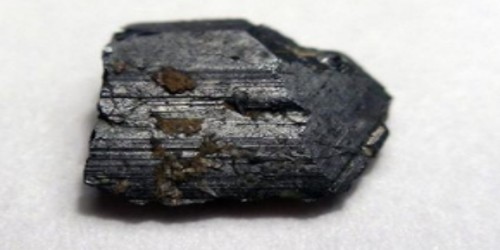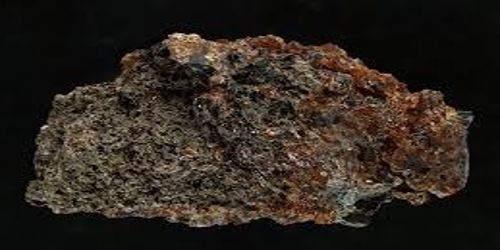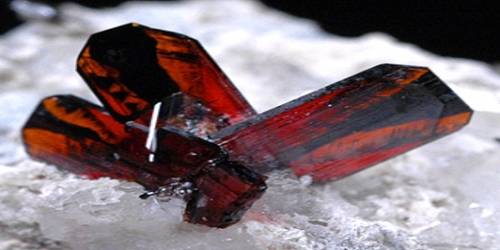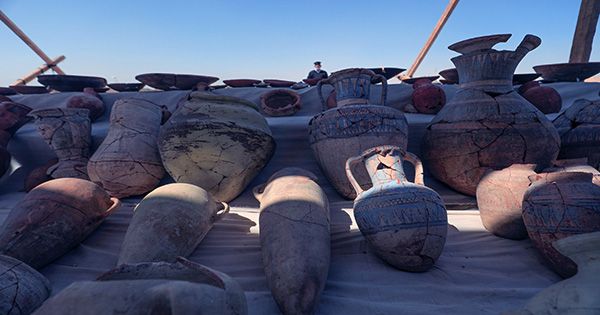Hutchinsonite is a sulfosalt mineral of thallium, arsenic and lead with formula (Tl, Pb)2As5S9. It is a rare hydrothermal mineral, a rare sulfosalt mineral of thallium, arsenic, and lead. It is a mineral consisting of a sulfide of lead, copper, and arsenic, with thallium and silver replacing variable amounts of lead and copper, and occurring in small red orthorhombic crystals.
It was first discovered in Binnental, Switzerland in 1904 and named after Cambridge mineralogist Arthur Hutchinson, F.R.S. (1866–1937).
General Information
- Category: Sulfosalt mineral
- Formula: (Tl, Pb)2As5S9
- Crystal system: Orthorhombic
- Crystal class: Dipyramidal (mmm)

Fig: Hutchinsonite – a sulfosalt mineral of thallium
Properties
- Color: Red, pink, black
- Crystal habit: Acicular – occurs as needle-like crystals
- Fracture: Very brittle fracture producing small, conchoidal fragments
- Mohs scale hardness: 1.5–2
- Luster: Sub-metallic
- Streak: Red
- Diaphaneity: Subtranslucent to opaque
- Specific gravity: 4.6
- Optical properties: biaxial (-)
Occurrence
Hutchinsonite is a rare mineral that occurs of hydrothermal origin in localities in Switzerland, Germany, Peru, Japan, and China. Minerals associated with Hutchinsonite include orpiment, realgar, getchellite, pyrite, sphalerite, hatchite, jentschite, schierite, edenharterite, bernardite, stalderite, ernigglite, and chabournite.
Information Source:
